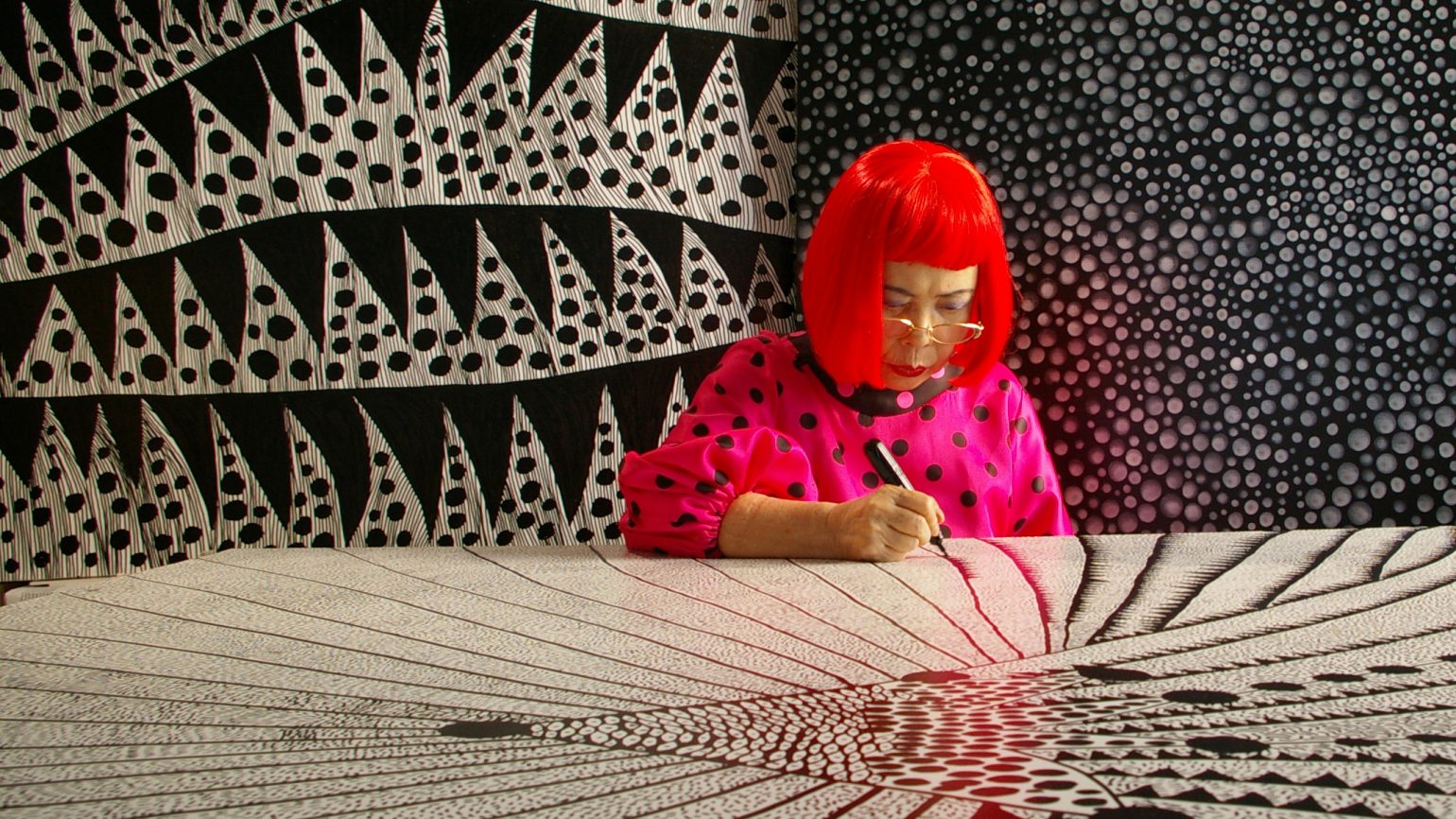The polka dot installations of Yayoi Kusama are perhaps the most iconic pieces of art by a living artist today. Tickets to attend her international exhibitions sell out in mere minutes. And her work can sell at auction for anything between three and seven million dollars.
Yes, there’s no denying that Kusama is one of the most beloved and successful artists of the last century.
It’s not always been that way for the enigmatic 89 year-old queen of the avant-garde. As director Heather Lenz reveals in her documentary Kusama: Infinity, life has not been easy on Kusama. From a shockingly young age, Kusama used art as therapy to shield her from the pressures of strict social expectations, a traumatic home life, and the early stages of mental illness.
Throughout the years, as Kusama moved to New York to fuel her ruthless obsession with fame, found it, then lost it, the connection between her creativity and mental illness grew so strong that the two became inseparable. The patterns that define her work – patterns she refers to as “infinity nets” – were borne from hallucinations that, Kusama believed, were a precursor to “self-obliteration” and the triumph of endless space and time.
The link is fascinating, but is approached from arm’s length. That’s not Lenz’s fault, it would appear, but a result of Kusama’s unique situation. She’s lived in a psychiatric hospital for the last 43 years, leaving only to work at her nearby studio, because it provides the support she needs to entirely dedicate herself to her art. It seems unlikely therefore that Lenz would have been able to ask Kusama any in-depth questions about her mental health, and even more unlikely that Kusama – well known as being a difficult interview – would answer.
Instead, we watch the documentary’s subject deal with the creative minutiae of her day. While visually striking, it’s superficial, and the appeal soon fades.
Charged with providing the context for Kusama’s life and work in her stead are a substantial group of industry experts, peers, and friends. The group charts her career extensively, their anecdotes complimented by archival footage that will thrill fans. Kusama’s presence and craft is palpable in these photos and videos, even if the technology of the times was unable to capture its vibrancy.
The story is marred, however, by resounding bias. One particular example is the way Kusama: Infinity seems to underplay her initial success in the 1960s. The documentary pitches Kusama as an artist ignored by the establishment in no small part because she was a Japanese woman, all while pop-art peers including Andy Warhol stole her best ideas.
It’s undeniable that Kusama’s race and gender made it harder for her to find the fame she so desperately desired in post-war America. Nevertheless, by calling out the likes of Warhol and Claes Oldenburg as thieves is a discredit to the influence Kusama had amongst her contemporaries, and an underhanded way to make the film feel topical instead of an honest portrayal of its subject’s challenges and achievements.
There’s a real ‘told-you-so’ tone that permeates Kusama: Infinity. A tone that suggests Kusama hasn’t found fame and fortune in modern days because of her contemporary appeal, but despite the desires of the institution she is now a champion of. Certain audiences will love the approach, but when the suggestion is made that Kusama’s two suicide attempts were the result of institutional oppression, the implication becomes worrisome.
Overall, Kusama: Infinity is a documentary that will appease fans and those curious enough to sit through a 78 minute debrief on an artistic icon, but offers little in the way of new insight into its troubled but fabulous subject.

